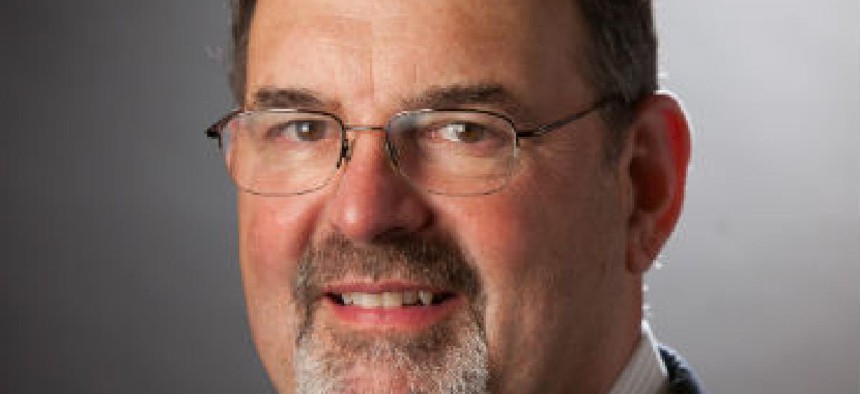Tony Scott's 'people agenda'

Integrating USDS staff with the existing IT workforce will be "one of the trickier things we have to do," says the new U.S. CIO.

Federal CIO Tony Scott
The federal government is at a crossroads in terms of IT, according to new CIO Tony Scott. Game-changing technologies like cloud computing are making it possible for large enterprises to be more nimble and responsive than ever before, while cutting costs. The policies and leadership buy-in are there. Now the big challenge is bringing in the right people to make it happen.
"The question is, can we take advantage of that in a meaningful way in the federal government, and over what period of time," Scott said, speaking with reporters after an event hosted by the Data Transparency Coalition on March 24 in Washington, D.C. "For me, we have a huge people agenda -- to bring in the right kind of talent and get some momentum on some of these things."
The U.S. Digital Service, the new organization that serves as a pipeline for private-sector IT talent seeking to serve short stints in government, is getting up to speed. As that new talent gets pushed out into agencies under special hiring authorities, Scott said, it's important to make sure the career employees know that they are valued.
"I think it's one of the trickier things we have to do," he said of integrating fresh faces from USDS with the existing IT workforce. "I have a lot of sympathy for folks who have been in the agencies and keeping the engines going and doing new development under the old IT model. That's easier to do in the government than sometimes to do the new way of doing things. Our experience is that [USDS staffers] give everybody on the team, old and new alike, the opportunity to do something different than what we've been doing. In most cases they've been embraced."
I think there's a danger, if we do [U.S. Digital Service deployment] the wrong way, there will be haves and have nots."
Scott argued that he "gives everyone permission to try different approaches, other than the way we've been doing it. That's pretty invigorating for most groups."
He has seen firsthand during his private-sector career what can happen if you empower one cadre of IT employees over another. "We saw that in private industry when the web first came along. Everyone went out, formed new teams, separate business units. One by one, every one of those got chipped -- the antibodies in the organization came out and killed you off," Scott said.
To avoid that, he said, IT teams must be integrated and collaborative. "I think there's a danger, if we do it the wrong way, there will be haves and have nots."
For his first six weeks on the job, Scott has largely been in listening mode, touring agencies and meeting with stakeholders on plans to implement the Federal IT Acquisition Reform Act, which was signed into law at the end of the last Congress. "It's important that we get that right," Scott said of FITARA implementation. "There are some agencies that don't like it very much, and those are the ones that probably need the most change. It's written for them."
But Scott is heartened by what looks to him like broad areas of policy agreement on the direction of IT reform in government.
"That's one of the things I tested before I came into the role," he explained. "I said, 'I don't want to walk into some political battle.'" But Scott has found that stakeholders on both sides of the aisle think that federal IT has been "pretty screwed up."
"So far there's been broad support," he said. "If we can demonstrate some success, that will only grow. I'm not naïve, but at the end of the day, there's nobody who says we should make this worse."
NEXT STORY: Olga Grkavac wins 2015 President's Award



